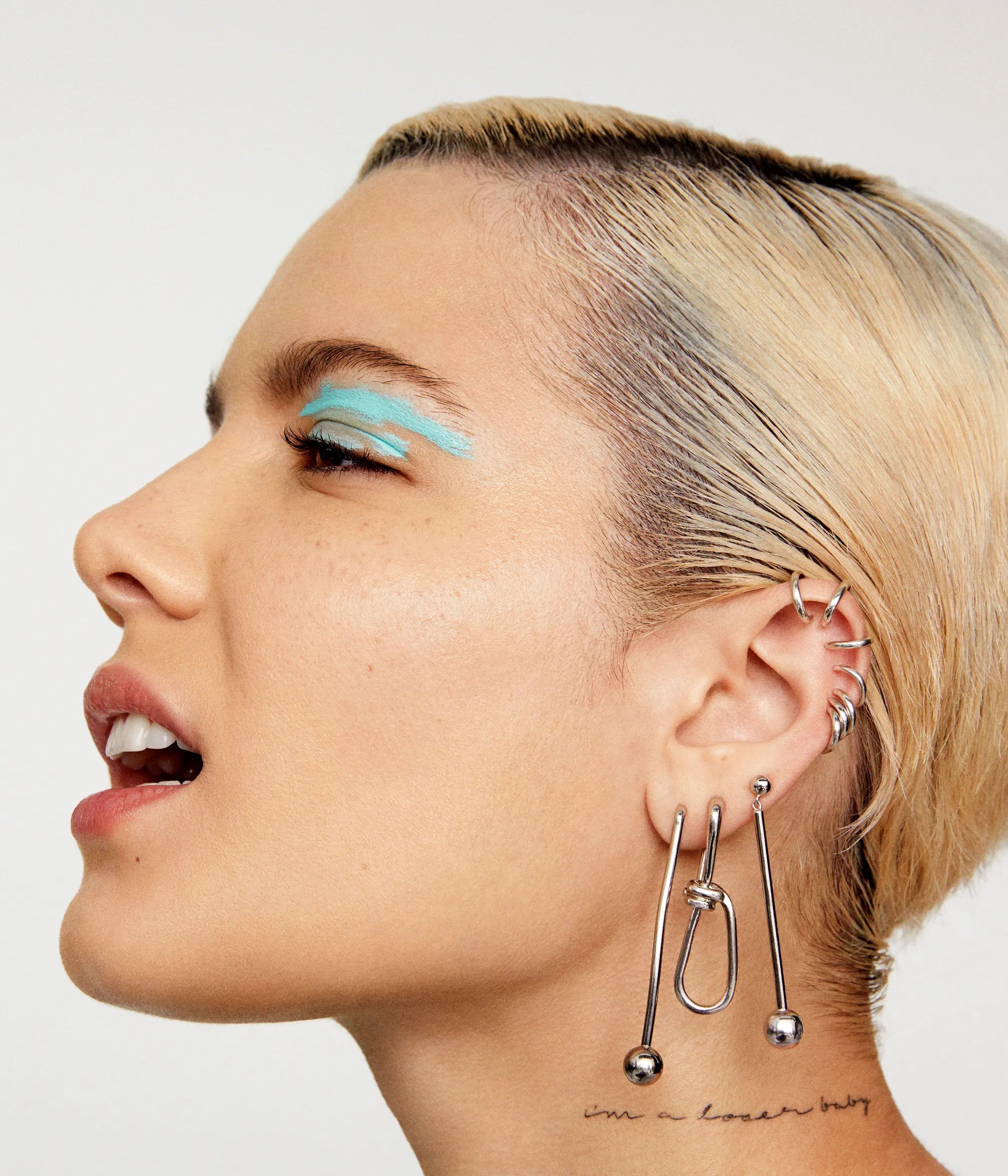Looking to add some bling to your body? Choosing the right material for your body jewelry is essential for both style and safety. In this comprehensive guide, we'll explore the world of body jewelry materials, including popular options like surgical steel, gold, and titanium, as well as newer materials like silicone, glass, wood, and niobium.
We'll dive into the unique properties and benefits of each material, including hypoallergenic and biocompatible options, durability, and ease of cleaning. We'll also highlight some of the downsides and important considerations for each material, so you can make an informed decision.
Whether you're a seasoned jewelry wearer or just getting started, this guide will help you choose the perfect material for your body jewelry, so you can shine on with confidence and style.
Surgical steel is a popular choice for body jewelry. This is because it is highly durable, hypoallergenic, and resistant to rust and corrosion. Surgical steel is typically made from a combination of iron, carbon, and chromium, which gives it its unique properties. The chromium in surgical steel prevents it from oxidizing, which means it won't rust or corrode over time. This makes surgical steel an ideal choice for those who want long-lasting, low-maintenance body jewelry.
Another great thing about surgical steel is that it's hypoallergenic. This means that it's less likely to cause skin irritation or allergic reactions, which can be a problem with other metals. If you have sensitive skin or allergies, then surgical steel may be the perfect material for your body jewelry.
Titanium is another popular choice for body jewelry. Like surgical steel, it's hypoallergenic and resistant to rust and corrosion. However, titanium has some unique properties that make it stand out from other materials.
Firstly, titanium is very lightweight, which makes it a great choice for body jewelry that you wear for extended periods. It's also very strong, which means that it won't break or bend easily. This makes titanium a good choice for those who are active or have an active lifestyle.
Another great thing about titanium is that it comes in a range of colors. By anodizing the metal, it's possible to create a range of beautiful colors, including blue, purple, green, and gold. This means that you can add a pop of color to your body jewelry without compromising on quality or durability.
Gold is a luxurious and beautiful material that's been used for body jewelry for centuries. However, not all gold is created equal, and it's important to choose the right karat for your body jewelry.
Pure gold is too soft to use for body jewelry, so it's usually mixed with other metals to make it more durable. The karat of gold refers to the amount of pure gold in the mixture. For example, 14-karat gold contains 58.3% pure gold, while 18-karat gold contains 75% pure gold.
The problem with gold is that it's not hypoallergenic. This means that if you have sensitive skin or allergies, then gold may not be the best choice for your body jewelry. However, if you can wear gold without any issues, then it's a great choice for a more luxurious look.
Acrylic is a plastic material that's often used for body jewelry. It's lightweight and affordable, which makes it a popular choice for those who want to experiment with different styles and designs.
One of the benefits of acrylic is that it can be made in a range of colors and patterns. This means that you can find acrylic body jewelry to match any outfit or style.
However, there are some downsides to acrylic. Firstly, it's not recommended for initial piercings. This is because acrylic can harbor bacteria, which can cause infections. It's also not as durable as other materials, so it may not last as long as you'd like.
Organic Materials
Organic materials like wood, bone, and horn can be used for body jewelry. These materials offer a unique look and feel.
Silicone is a synthetic material that's becoming increasingly popular for body jewelry. It's a soft and flexible material that's comfortable to wear, which makes it ideal for piercings that need to flex or move.
One of the benefits of silicone is that it's hypoallergenic and biocompatible, which means that it won't cause skin irritation or allergic reactions. It's also easy to clean and sterilize, which makes it a popular choice for those who want low-maintenance body jewelry.
Another great thing about silicone is that it can be made in a range of colors and designs. This means that you can find silicone body jewelry to match any outfit or style.
Glass is a beautiful and unique material that's used for body jewelry. It's made by heating sand and other materials to high temperatures, which causes them to fuse together and form glass.
One of the benefits of glass is that it's hypoallergenic and easy to clean. It's also very durable and won't tarnish or corrode over time. This means that glass body jewelry can last for years with proper care.
Another great thing about glass is that it can be made in a range of colors and designs. This means that you can find glass body jewelry to match any outfit or style.
Wood is a natural material that's often used for body jewelry. It offers a unique look and feel that's hard to replicate with other materials.
One of the benefits of wood is that it's lightweight and comfortable to wear. It's also hypoallergenic, which means that it's less likely to cause skin irritation or allergic reactions.
However, there are some downsides to wood. Firstly, it's not as durable as other materials, so it may not last as long as you'd like. It's also important to choose a type of wood that's been properly treated to avoid infections.
Niobium
Niobium is a relatively new material that's being used for body jewelry. It's a hypoallergenic metal that's similar in properties to titanium.
One of the benefits of niobium is that it's lightweight and durable. It's also hypoallergenic, which means that it's less likely to cause skin irritation or allergic reactions.
Another great thing about niobium is that it can be anodized to create a range of beautiful colors. This means that you can add a pop of color to your body jewelry without compromising on quality or durability.
However, niobium can be more difficult to find than other materials, and it may be more expensive as a result.
In conclusion, there are many different materials to choose from when it comes to body jewelry. Each material has its unique properties and benefits, so it's important to choose the right one for your needs. Whether you prefer the durability of surgical steel, the luxury of gold, or the flexibility of silicone, there's a material out there that's perfect for you. Always make sure to choose a safe material for your body jewelry and enjoy experimenting with different styles and designs!


